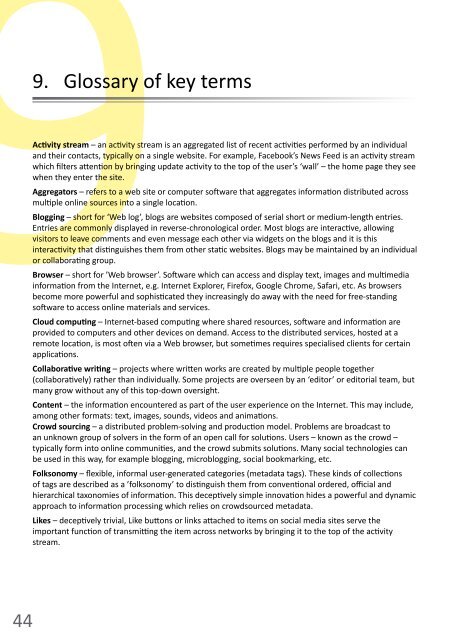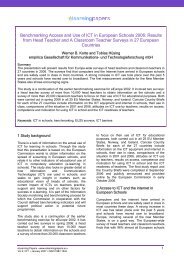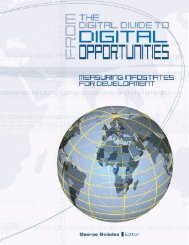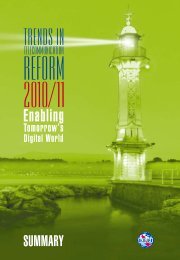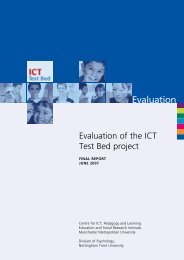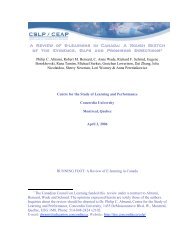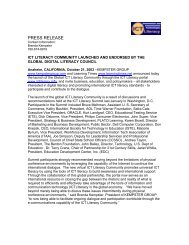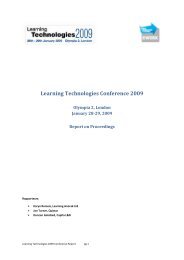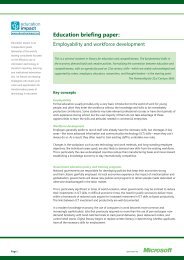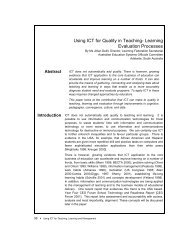Social Media - A guide for researchers - ICT Digital Literacy
Social Media - A guide for researchers - ICT Digital Literacy
Social Media - A guide for researchers - ICT Digital Literacy
Create successful ePaper yourself
Turn your PDF publications into a flip-book with our unique Google optimized e-Paper software.
9. Glossary of key terms<br />
Activity stream – an activity stream is an aggregated list of recent activities per<strong>for</strong>med by an individual<br />
and their contacts, typically on a single website. For example, Facebook’s News Feed is an activity stream<br />
which filters attention by bringing update activity to the top of the user’s ‘wall’ – the home page they see<br />
when they enter the site.<br />
Aggregators – refers to a web site or computer software that aggregates in<strong>for</strong>mation distributed across<br />
multiple online sources into a single location.<br />
Blogging – short <strong>for</strong> ‘Web log’, blogs are websites composed of serial short or medium-length entries.<br />
Entries are commonly displayed in reverse-chronological order. Most blogs are interactive, allowing<br />
visitors to leave comments and even message each other via widgets on the blogs and it is this<br />
interactivity that distinguishes them from other static websites. Blogs may be maintained by an individual<br />
or collaborating group.<br />
Browser – short <strong>for</strong> ’Web browser’. Software which can access and display text, images and multimedia<br />
in<strong>for</strong>mation from the Internet, e.g. Internet Explorer, Firefox, Google Chrome, Safari, etc. As browsers<br />
become more powerful and sophisticated they increasingly do away with the need <strong>for</strong> free-standing<br />
software to access online materials and services.<br />
Cloud computing – Internet-based computing where shared resources, software and in<strong>for</strong>mation are<br />
provided to computers and other devices on demand. Access to the distributed services, hosted at a<br />
remote location, is most often via a Web browser, but sometimes requires specialised clients <strong>for</strong> certain<br />
applications.<br />
Collaborative writing – projects where written works are created by multiple people together<br />
(collaboratively) rather than individually. Some projects are overseen by an ‘editor’ or editorial team, but<br />
many grow without any of this top-down oversight.<br />
Content – the in<strong>for</strong>mation encountered as part of the user experience on the Internet. This may include,<br />
among other <strong>for</strong>mats: text, images, sounds, videos and animations.<br />
Crowd sourcing – a distributed problem-solving and production model. Problems are broadcast to<br />
an unknown group of solvers in the <strong>for</strong>m of an open call <strong>for</strong> solutions. Users – known as the crowd –<br />
typically <strong>for</strong>m into online communities, and the crowd submits solutions. Many social technologies can<br />
be used in this way, <strong>for</strong> example blogging, microblogging, social bookmarking, etc.<br />
Folksonomy – flexible, in<strong>for</strong>mal user-generated categories (metadata tags). These kinds of collections<br />
of tags are described as a ’folksonomy’ to distinguish them from conventional ordered, official and<br />
hierarchical taxonomies of in<strong>for</strong>mation. This deceptively simple innovation hides a powerful and dynamic<br />
approach to in<strong>for</strong>mation processing which relies on crowdsourced metadata.<br />
Likes – deceptively trivial, Like buttons or links attached to items on social media sites serve the<br />
important function of transmitting the item across networks by bringing it to the top of the activity<br />
stream.<br />
44


